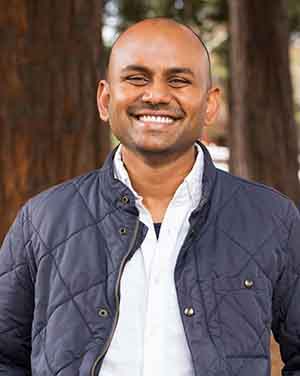The number of online grocery operators — especially those offering rapid delivery — has proliferated over the past few years, driven most recently by the explosion in e-grocery demand amid the pandemic.
But online grocer Farmstead brings a different model to the table with its “farm to fridge” approach.
Leveraging artificial intelligence technology, Burlingame, Calif.-based Farmstead said it has “reinvented the grocery buying experience” and “rewired how food moves across the country” to make locally sourced food more accessible and reduce food waste. The company, founded in 2016, started off in the San Francisco Bay Area and last year entered Raleigh-Durham, N.C., and Miami following a late 2020 launch in Charlotte, N.C.
 Photo: Pradeep Elankumaran
Photo: Pradeep Elankumaran
Farmstead launched in Chicago this past February and said it aims to expand nationwide and serve a primarily suburban, midmarket customer base.
“We are live in five markets right now. We started in the Bay Area, a first-tier market, and then we went to Charlotte and Raleigh to explore how the model would change or not change in markets that were a lot smaller than the Bay Area. Then we went back to bigger cities, in Miami and Chicago,” Pradeep Elankumaran, co-founder and CEO of Farmstead, told Supermarket News in a podcast interview. “Upcoming markets, a lot of it is still confidential, but we’re looking to open in another eight to 10 markets very rapidly.”
Farmstead also licenses its Grocery OS technology stack to other retailers, providing a turnkey solution for getting a dark-store delivery operation up and running in several weeks, from securing commercial real estate space to inventory sourcing to delivery service. The e-grocer focuses on one- to two-hour free delivery and serving consumers across a large radius, generally 50 miles, which the company said helps eliminate food deserts while offering better prices than local supermarkets. In addition, the efficiencies of the Farmstead model are aimed at helping users of its solution reach per-market profitability faster.
“We realized the tech stack that powers our own operations is very relevant for folks operating out of stores or big FCs [fulfillment centers], as well as smaller FCs,” Elankumaran said. “It’s easy to find a pick-and-pack solution, it’s easy to find a delivery solution and it’s easy to find an inventory control solution. But when you’re delivering every single day, and you have to deliver within a few hours of when the customer places the order, the way all of these pieces fit together winds up mattering a lot more than any particular part of the solution.”


